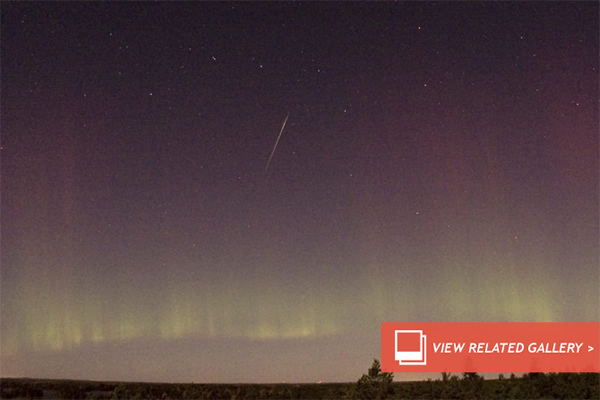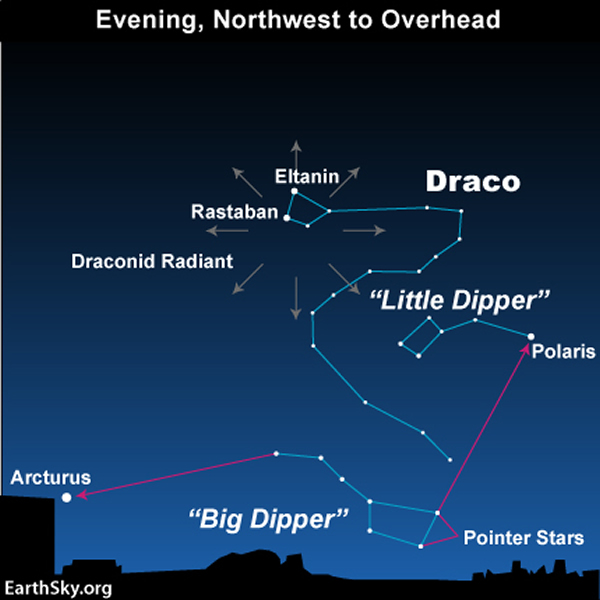Draconid Meteor Shower: Will The Dragon Spit?
The activity of meteor showers can be hit-and-miss at the best of times, but tonight’s spectacle — the Draconids — is known to be highly unpredictable. However, if history has taught us one thing, never underestimate a Dragon’s temper; there’s always a chance the shower may turn into a storm.
Radiant point of Draconid meteor shower, in the Head of the constellation Draco the Dragon, near the Dragon’s Eyes: the stars Rastaban and Eltanin. Source: EarthSky.org
The Draconid meteor shower occurs at this time every year when dust from Comet 21P/Giacobini-Zinner hits the Earth at high speed, creating a trail of bright ionized gas in the upper atmosphere. This is a meteor, or “shooting star.” Unlike the majority of other showers through the year that are best observed after midnight, the Draconids can be observed at nightfall, just after sunset. So if you’re not a late owl, and you live in the Northern Hemisphere, this is the shower for you. All you have to do is lie down, with your feet pointing north, while looking toward the constellation Draco (the Dragon).
Draco is the radiant of this shower (so any meteors you see will appear to emanate from that point), which will be at its highest in the night sky soon after the sun has set, but as the night progresses, the radiant will drop below the horizon, hence why this shower is viewable so early in the night.
Generally speaking, the Draconids isn’t necessarily the “go to” meteor event of the year, and astronomers have no reason to believe a huge number of meteors will make an appearance this year. But according to EarthSky.org, “the Draconid meteor shower produced awesome meteor displays in 1933 and 1946, with thousands of meteors per hour seen in those years.” As recent as 2011, observers were treated to up to 600 meteors per hour, which is, meteor shower-speaking, very impressive.
Comet 21P/Giacobini-Zinner has an orbital period of 6 years and 4 months around the sun, so the dusty track of cometary debris is renewed on each comet pass. The orbital period of the comet has also helped astronomers predict the intensity of each meteor shower. In 2011, for example, the comet was at closest approach to the sun (perihelion), which explains the high meteor rates that year. So what about 2013, two years after perihelion? Well, that’s anyone’s guess.
Another factor to consider is the moon. Currently appearing as a very thin waxing crescent, there is little moonlight to mask the trails of the dimmer meteors, so at least there’s a guarantee of dark skies. But of course, that depends on your location. Cloud cover and light pollution from urban areas will greatly limit the number of visible meteors.
Should the Draconids no-show us tonight, there’s another viewing opportunity tomorrow (Oct. 8) at the same time after sunset.
Image: A lone Draconid lights up the sky during auroral activity on the horizon. Credit: Corbis(Oct 7, 2013 02:07 PM ET // by Ian O'Neill)













